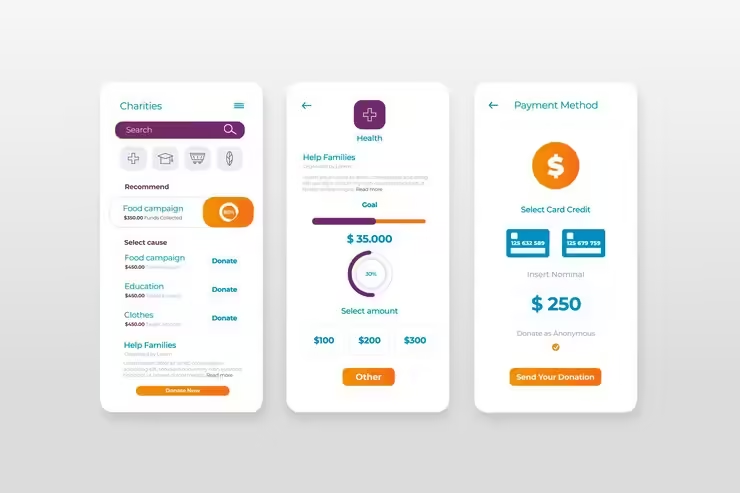Introduction
Budgeting is a crucial aspect of personal finance management that can significantly impact your financial health and overall well-being. It involves creating a plan to manage your income and expenses, ensuring that you live within your means, save for future goals, and reduce financial stress. This comprehensive guide will walk you through the essential steps of creating and sticking to a budget, including understanding budgeting fundamentals, setting financial goals, tracking expenses, and overcoming common challenges.
Understanding Budgeting
What is a Budget?
A budget is a financial plan that outlines how you will allocate your income towards various expenses, savings, and investments over a specific period. It helps you monitor your spending, manage debt, and achieve financial goals by providing a clear overview of your financial situation.
Benefits of Budgeting
- Control Over Finances: A budget provides a structured approach to managing money, helping you control spending and avoid overspending.
- Achieve Financial Goals: Budgeting allows you to allocate funds towards short-term and long-term goals, such as saving for a vacation, buying a home, or retirement.
- Reduce Financial Stress: By keeping track of your finances, budgeting can alleviate stress related to money management and debt.
- Improve Financial Awareness: Regularly reviewing your budget increases your awareness of spending patterns and financial habits.
Creating a Budget
Step 1: Assess Your Financial Situation
- Calculate Your Income: Determine your total monthly income from all sources, including salary, bonuses, rental income, and investments.
- Gross vs. Net Income: Consider your net income (after taxes and deductions) for a more accurate picture of available funds.
- List Your Expenses: Identify and categorize all your monthly expenses, including fixed and variable costs.
- Fixed Expenses: Regular, predictable expenses such as rent/mortgage, utilities, insurance, and loan payments.
- Variable Expenses: Fluctuating costs like groceries, dining out, entertainment, and transportation.
- Analyze Your Spending Patterns: Review your past bank statements and credit card bills to understand where your money is going.
Step 2: Set Financial Goals
- Short-Term Goals: Goals you want to achieve within the next year, such as paying off a credit card or saving for a vacation.
- Examples: Building an emergency fund, buying a new gadget, or taking a weekend trip.
- Medium-Term Goals: Goals you plan to accomplish within 1-5 years, such as saving for a down payment on a house or funding a child’s education.
- Examples: Renovating your home, buying a car, or going back to school.
- Long-Term Goals: Objectives that take more than five years to achieve, such as retirement savings or paying off a mortgage.
- Examples: Saving for retirement, investing in real estate, or establishing a college fund.
- SMART Goals: Ensure your goals are Specific, Measurable, Achievable, Relevant, and Time-bound for better clarity and motivation.
Step 3: Create a Budget Plan

- Choose a Budgeting Method: Select a budgeting method that suits your preferences and lifestyle.
- Zero-Based Budgeting: Allocate every dollar of your income to specific expenses, savings, or debt repayment, leaving no money unassigned.
- Envelope System: Use physical or digital envelopes to allocate cash for different spending categories.
- 50/30/20 Rule: Allocate 50% of your income to needs, 30% to wants, and 20% to savings and debt repayment.
- Percentage-Based Budgeting: Allocate a percentage of your income to various categories based on your financial goals.
- Allocate Funds: Distribute your income according to your chosen budgeting method, ensuring that essential expenses and financial goals are covered.
- Essential Expenses: Prioritize needs such as housing, utilities, and groceries.
- Savings and Investments: Allocate funds towards savings goals, retirement accounts, and investments.
- Discretionary Spending: Budget for wants and non-essential expenses, such as dining out and entertainment.
- Create a Budget Template: Use a budgeting template or tool to track your income, expenses, and progress towards goals.
- Spreadsheet: Create a custom spreadsheet using software like Microsoft Excel or Google Sheets.
- Budgeting Apps: Utilize apps like Mint, YNAB (You Need A Budget), or PocketGuard for automated tracking and management.
Sticking to Your Budget
Step 4: Track Your Expenses
- Record Transactions: Keep a record of all your spending to ensure it aligns with your budget.
- Manual Tracking: Write down expenses in a notebook or use a digital journal.
- Automated Tracking: Link your bank accounts and credit cards to budgeting apps for automatic tracking.
- Review and Adjust: Regularly review your spending and compare it to your budget.
- Weekly Check-Ins: Perform weekly reviews to stay on top of your finances and make adjustments as needed.
- Monthly Reviews: Conduct a thorough review at the end of each month to assess progress and identify areas for improvement.
- Identify and Address Issues: Analyze discrepancies between your budget and actual spending to identify and address potential issues.
- Adjust Budget Categories: Modify budget categories if you consistently overspend in certain areas.
- Find Savings Opportunities: Look for ways to reduce expenses and redirect funds towards savings or debt repayment.
Step 5: Make Adjustments
- Adapt to Changes: Adjust your budget to accommodate changes in income, expenses, or financial goals.
- Income Changes: Update your budget if you receive a raise, lose a job, or have changes in other sources of income.
- Expense Changes: Modify your budget if you experience fluctuations in regular expenses, such as utilities or insurance.
- Review Financial Goals: Reassess and adjust your financial goals as needed to stay on track with your overall financial plan.
- Progress Check: Evaluate your progress towards short-term, medium-term, and long-term goals.
- Goal Revisions: Adjust goals or timelines based on changes in your financial situation or priorities.
- Optimize Spending: Continuously seek opportunities to optimize spending and maximize your budget’s effectiveness.
- Cut Unnecessary Costs: Identify and eliminate non-essential expenses or find more affordable alternatives.
- Increase Savings: Allocate additional funds towards savings or investments when possible.
Overcoming Common Budgeting Challenges
Challenge 1: Impulse Spending
- Identify Triggers: Recognize situations or emotions that lead to impulse spending.
- Common Triggers: Stress, boredom, or social pressure can drive impulsive purchases.
- Implement Strategies: Use strategies to curb impulse spending.
- Create a Shopping List: Stick to a list when shopping to avoid unplanned purchases.
- Avoid Tempting Environments: Stay away from stores or websites that encourage impulse buying.
- Practice Mindful Spending: Focus on making intentional and thoughtful purchasing decisions.
- Wait Period: Implement a 24-hour rule to give yourself time to evaluate the necessity of a purchase.
Challenge 2: Unexpected Expenses
- Build an Emergency Fund: Set aside funds for unexpected expenses to avoid disrupting your budget.
- Emergency Fund Goal: Aim to save three to six months’ worth of living expenses.
- Plan for Irregular Expenses: Include occasional expenses in your budget, such as car maintenance or annual subscriptions.
- Sinking Funds: Create separate savings accounts for irregular expenses to spread the cost throughout the year.
- Adjust Your Budget: Make temporary adjustments to your budget to accommodate unexpected expenses.
- Reallocate Funds: Redirect funds from discretionary spending or other categories to cover emergencies.
Challenge 3: Lack of Motivation
- Set Clear Goals: Establish specific, achievable goals to stay motivated and focused on your budget.
- Visual Reminders: Use visual aids, such as charts or progress trackers, to remind you of your goals.
- Celebrate Achievements: Acknowledge and celebrate milestones and successes to maintain motivation.
- Reward Yourself: Treat yourself to small rewards or experiences when you reach budget milestones.
- Seek Support: Share your budgeting goals with friends or family for accountability and encouragement.
- Budgeting Groups: Join online forums or local budgeting groups for support and advice.
Challenge 4: Overspending on Fixed Expenses
- Review and Negotiate: Regularly review fixed expenses and negotiate for better rates or find more affordable options.
- Negotiate Bills: Contact service providers to negotiate lower rates on utilities, insurance, or subscriptions.
- Compare Alternatives: Research and compare alternative providers for better deals on essential services.
- Switch Providers: Consider switching to more cost-effective providers for services like internet or insurance.
- Reduce Consumption: Implement strategies to reduce consumption and lower fixed expenses.
- Energy Efficiency: Make your home more energy-efficient to lower utility bills.
Tools and Resources for Budgeting
Budgeting Apps and Software

- Mint: Offers comprehensive budgeting and expense tracking features with automatic categorization.
- YNAB (You Need A Budget): Focuses on zero-based budgeting and helps users allocate every dollar.
- PocketGuard: Tracks spending and identifies opportunities to save money.
- EveryDollar: Provides a straightforward budgeting tool with customizable categories.
Budgeting Templates
- Spreadsheet Templates: Create custom budgeting templates using software like Microsoft Excel or Google Sheets.
- Features: Include income tracking, expense categories, and savings goals.
- Printable Budget Worksheets: Use printable worksheets for manual budgeting and tracking.
- Templates: Available from financial websites or personal finance books.
Financial Counseling and Education
- Financial Advisors: Seek professional advice for personalized budgeting and financial planning.
- Certified Financial Planners (CFP): Professionals who provide comprehensive financial planning services.
- Online Courses and Workshops: Enroll in courses or workshops to improve budgeting skills and financial literacy.
- Platforms: Websites like Coursera, Udemy, or local community centers offer financial education courses.
- Books and Guides: Read books on personal finance and budgeting for additional insights and strategies.
- Recommended Reads: Titles like “The Total Money Makeover” by Dave Ramsey or “You Need a Budget” by Jesse Mecham.
Conclusion
Creating and sticking to a budget is a fundamental aspect of effective financial management. By understanding your financial situation, setting clear goals, and using proven strategies, you can develop a budget that helps you achieve your financial objectives, manage expenses, and reduce stress. Remember, budgeting is an ongoing process that requires regular review and adjustment. Stay committed, be patient, and celebrate your progress as you work towards a healthier financial future.
Meditation Enhances Financial Decision-Making: A Path to Brilliant Clarity










No Comment! Be the first one.